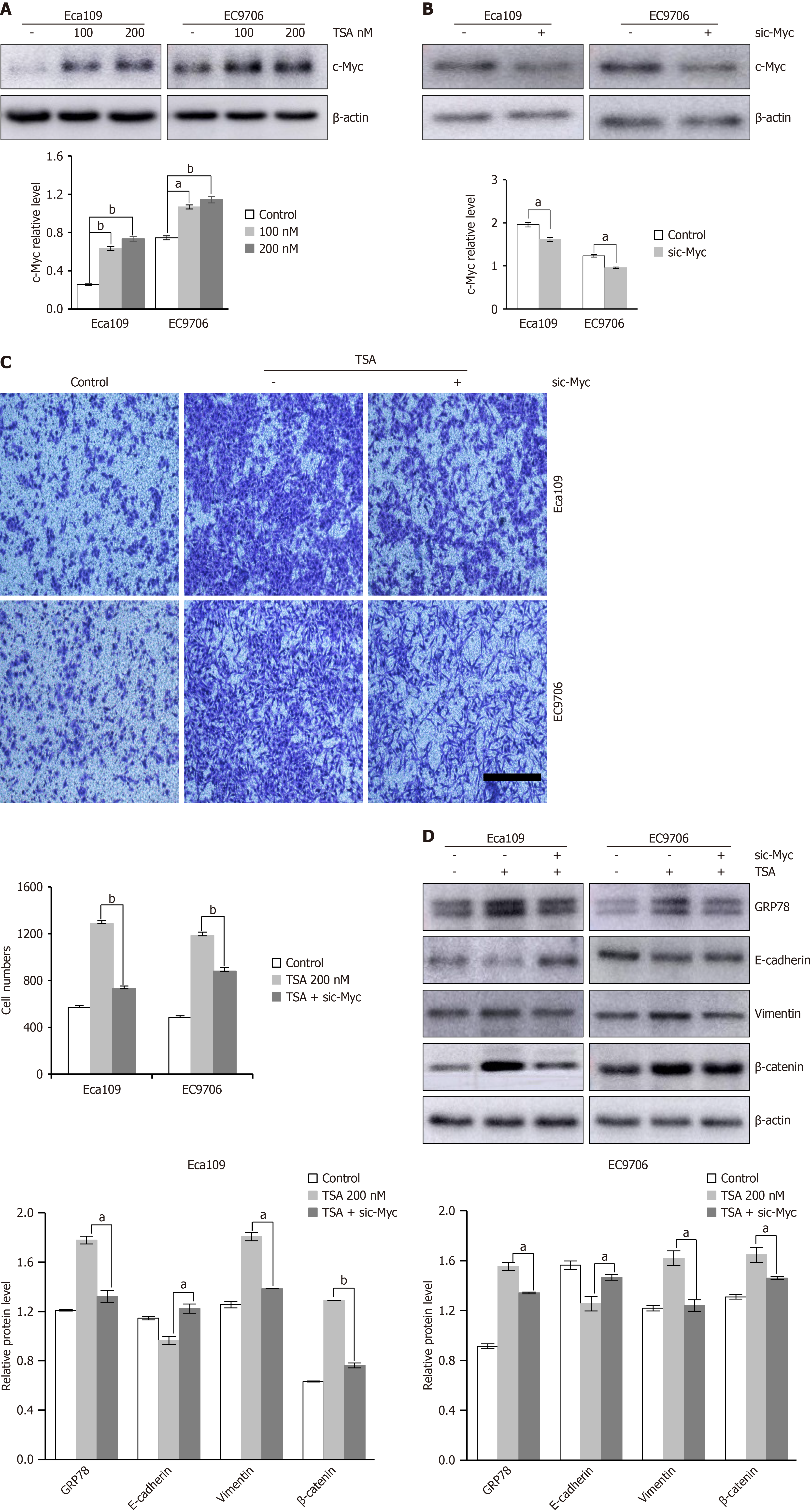Copyright
©The Author(s) 2025.
World J Gastroenterol. Mar 21, 2025; 31(11): 103449
Published online Mar 21, 2025. doi: 10.3748/wjg.v31.i11.103449
Published online Mar 21, 2025. doi: 10.3748/wjg.v31.i11.103449
Figure 3 Trichostatin A promotes epithelial-mesenchymal transition of esophageal squamous cell carcinoma cells through cellular myelocytomatosis oncogene mediated endoplasmic reticulum stress.
A: Western blot shows after trichostatin A (TSA) treatment that cellular myelocytomatosis oncogene (c-Myc) level increased; B: Relative protein level of c-Myc in control cells and c-Myc-knockdown cells treated with TSA was examined by western blot; C: Representative images of the migration of Eca109 and EC9706 cells knockdown c-Myc protein and treated with TSA examined by Transwell assays; D: Western blot shows after TSA combined with sic-Myc that endoplasmic reticulum stress and epithelial-mesenchymal transition marker E-cadherin level increased, glucose-regulated protein 78, vimentin, β-catenin level decreased. Cell counts are for the corresponding assays of at least five random microscope fields (100 magnification). n = 5, P vs control. aP < 0.05. bP < 0.01. Bar is 50 μm. TSA: Trichostatin A; GRP78: Glucose-regulated protein 78; c-Myc: Cellular myelocytomatosis oncogene.
- Citation: Chen YM, Yang WQ, Fan YY, Chen Z, Liu YZ, Zhao BS. Trichostatin A augments cell migration and epithelial-mesenchymal transition in esophageal squamous cell carcinoma through BRD4/c-Myc endoplasmic reticulum-stress pathway. World J Gastroenterol 2025; 31(11): 103449
- URL: https://www.wjgnet.com/1007-9327/full/v31/i11/103449.htm
- DOI: https://dx.doi.org/10.3748/wjg.v31.i11.103449









